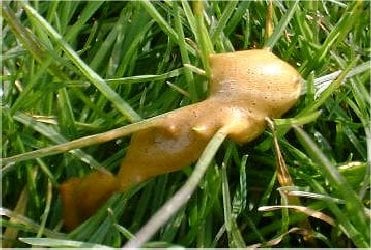country lovin
Songster
In all the excitement of being on day 20 with my leghorns I totally forgot I get to candle the barred rocks tonight day 14!
Follow along with the video below to see how to install our site as a web app on your home screen.
Note: This feature may not be available in some browsers.
Buy some Safeguard liquid for goats or Safeguard/Panacur paste for horses. The dose I use is 0.23 ml per pound orally for five consecutive days.She drinking and sitting up! Now I have to figure out how the heck to worm them.
A follicular cyst begins when something goes wrong and the follicle doesn't rupture or release its egg. Instead it grows and turns into a cyst and ruptures same sings as a ruptured appendix. I'll be right as rain in a few days to a week. Thank you ..My daughter is GREAT she even kept her 9 year old brother
@Mirajane how are your chicks?What should I do for the chick bleeding out of his navel from hatching? He's kinda stuck to the shell and I don't wanna pull him off and rip something

hey,ms Sally I'm worriedlove yer avy beautiful Kathy jessismom!
Quote:). Furthermore, high ambient CO2 can cause higher blood and air cell pCO2 in the early stage of incubation (De Smit et al., 2006; Bruggeman et al., 2007). Up to d 19, oxygen supply occurs only via blood circulating through the chorioallantoic membrane (Mortola, 2009). From d 19 to 20, however, the chick pierces the air-space membrane of the egg with its beak (internal pipping), which allows pulmonary respiration to begin. Thereafter, until hatching is complete at about d 20 or 21, oxygen supply occurs via both the chorioallantoic membrane and the lungs. The oxygen contributed via the chorioallantois declines to low levels during this period, but the pulmonary contribution compensates with a 1.5- to 2-fold rise. This is aided at approximately d 19 or 20 by the chick penetrating the eggshell with its beak (external pipping) and thereby gaining access to atmospheric air. There needs to be an overall balance between delivery of oxygen by these means and an increase in oxygen demand by the chick as it grows, as well as the marked increase in demand associated with prehatching and hatching behavior (Menna and Mortola, 2002; Mellor and Diesch, 2007).
Quote: Slowly catching up... Thanks for sharing your knowledge!
Had several different vets prescribe it for my young birds, and many people on BYC have had it prescribed for their young ones. This is something I found in Clinical Avian Medicine:
And this is from a veterinary drug handbook of mine:
-Kathy
For those that have ever had a respiratory infection in their flock, take a look at this:
@Fire Ant Farm or anyone else, can you explain what all this means? I see that sulfadimethoxine has a susceptible next to it, does that mean that I could have been used? Just curious... Anyway, the peafowl this was for was not mine and the owner's vet ended up prescribing gamithromycin, which is a cattle drug that is given by injection once every 7 days. I think.
This is the same bird, but different drugs tested:
-Kathy
Quote: I've been pretty lucky and haven't had to treat more than a few, but if I had something go through my flock and clear up on it's own I wouldn't do anything except maybe have an antibiotic or two on hand in case I had another like the peachick I posted about. My friend was not as lucky... He tried Tylan (tylosin), then Baytril (enrofloxacin) and maybe another one or two. This pseudomonas spread very quickly and he lost 10% of his youngstock before his report came back and they switched to gamithromycin.
-Kathy
Quote:
Quote:@daxigate
have a look http://chat.allotment-garden.org/index.php?topic=17568.0

These are produced from the caecum of the chicken and are mustard to dark brown froth. They are expelled every 8 to 10 droppings.
Let me start by saying that poop from chickens, peafowl and turkeys looks the same. Cecal poop might vary a little in color, but not in texture/consistency. That said, what would you think if I told you that there were six very sick peafowl at the feed store with poop that looked like this:

Of the six, three died, so I stole their bodies an took them to UC Davis for necropsies. Would it surprise you to know that all three had severe coccidisosis?
IMO, foamy or frothy droppings are not normal, and I rarely see them in my flock.
This is a normal peafowl cecal poop... note the creamy appearance, much like peanut butter.
Will try to get some pictures of what I consider healthy, normal cecal poop. Peafowl are darker than chickens, but I'm not sure why...
-Kathy
@casportpony anything else to add to this?
MPC Easter Egg GIVEAWAY!
https://www.backyardchickens.com/t/1080050/mpc-easter-egg-giveaway
giving away a dozen eggs each to 3 lucky people who comment that thread above!
The winners of our giveaway will be chosen randomly on February 26th, so they can ship the following Monday. The eggs will be hatchery choice (based upon what the girls are laying at the time)... but do tell us about the breeds you’re hoping for in your comment/entry, and we’ll do our best to accommodate the winners’ wishes.
@gotro17 do you have an update on this chicks legs?
Quote: Update @HeatherMarieR